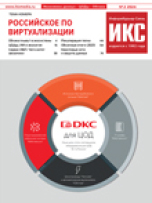| Рубрикатор |  |
 |
| Все новости |  |
World News |  |
 |
Report: Videoconferencing market saw growth in 2009
| 19 апреля 2010 |
2009 seems like it was actually a pretty good year for our industry despite all the economic setbacks. As the dust clears, Frost and Sullivan just completed a report that paints a rosy picture on the videoconferencing market.
The scope of this research covers two primary service models:
-
Hosted Videoconferencing Services include multipoint bridging to connect two or more endpoints, gateway services, events management, and other offerings hosted by the conferencing service provider (CSP) on a shared or multi-tenant basis. These services are primarily bought by users that don’t have in-house bridges or MCUs, or that require hosted services for overflow.
-
Videoconferencing and Telepresence Managed Services are an emerging class of services under which the managed service provider (MSP) offers an end-to-end bundle of services, either on-site or remotely through a central video network operations center (VNOC). When they install the technology on premises, companies face complex videoconferencing requirements, including integration, bandwidth management and application management. MSPs can help.
The North American videoconferencing services market saw a healthy revenue growth of 18% in 2009, reaching $184.2 million. Between 2009 and 2016, we expect the market to see a compound annual growth rate (CAGR) of 18.4 percent, to $599.6 million.
In 2009, hosted bridging services grew at a relatively slower rate of seven percent, to reach $69.0 million. The reasons for the slower growth include pricing pressures and lower demand for bridging services, as companies continue to see better value in buying bridges and employing a provider to manage their videoconferencing infrastructure. The managed services market, on the other hand, saw impressive growth of 26% to reach $115.2 million in 2009--despite the down economy, and the fact that many enterprises held off on more pervasive videoconferencing roll-outs. We expect managed services to sustain its growth momentum over the coming years, with a CAGR of 23.4% between 2009 and 2016, for a total market of $503.3 million.
Despite the good growth posted in 2009, the videoconferencing services market is far from reaching critical mass, especially as companies that have deployed videoconferencing on site grapple with the complex nature of the technology, ensuring interoperability among multiple vendors and across networks, and tackling network redundancy.
Furthermore, as communications traffic on IP networks increases, bandwidth can no longer be dedicated to video, and IT managers must plan accordingly; this is especially true for HD videoconferencing and telepresence, which are bandwidth-intensive. Meanwhile, interconnectivity between new-generation and legacy systems calls for transcoding, speed matching, and the smart use of gateways. As companies climb up the technology curve, there will be an increasing need to outsource such complex services to external experts rather than managing them in-house.
Finally, as companies strive to establish cost-effective and seamless communication with their customers, partners and suppliers, videoconferencing is moving beyond the enterprise firewall. That brings its own interoperability issues; enterprises need intermediaries with the ability to connect conferencing systems across organizations.
Post by Melanie Turek, Frost and Sullivan, at No Jitter
Источник: FierceVoIP
Читайте также:
В промышленности наступает эпоха периферийных вычислений
Объем рынка технологий в сфере здравоохранения в этом году достигнет $2 трлн
Bosch Service Solutions получает награду Technology Leadership Award
Рынок аналитики больших данных будет расти на 35,9% ежегодно
К 2025 году беспилотные автомобили займут 40% мирового рынка легковых машин

















Оставить свой комментарий:
Комментарии по материалу
Данный материал еще не комментировался.